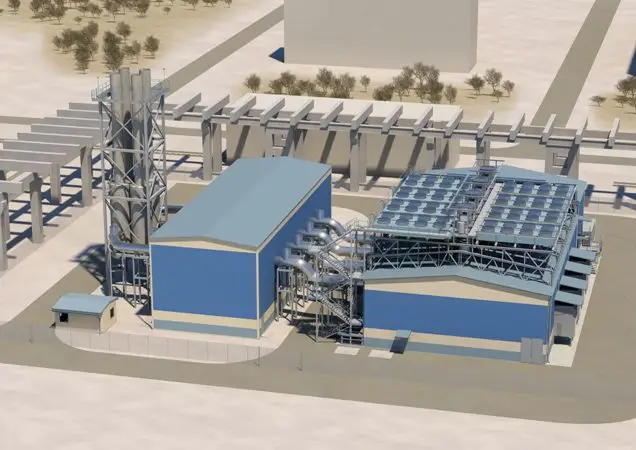Adopting green technology in construction industry in South Africa is gaining pace.Commercial property sector is a good example where green construction has been embraced.
Since 2009, the total number of green-construction projects certified by the Green Building Council South Africa (GBCSA) has increased by 121%, with aspects such as energy, water, waste management, transport, emissions and indoor-environment quality all taken into account.
The green technology in construction industry in South Africa is seen as a way of conserving the environment.
Banks, listed property funds, developers and certain government departments seem to be leading the charge. Nedbank was the first, back in 2009, with the launch of their Sandton head office extension, and FNB, ABSA and Standard Bank are following suit. Growthpoint and Redefine have both stated that all their new buildings will conform with GBCSA’s minimum Green Star SA rating, with Attacq and Tower also striving to differentiate themselves in terms of green. Rabie has had many of their Century City buildings certified green, and key government departments are following suit, including the departments of Environmental Affairs and Public Works, the Western Cape Government, the City of Cape Town and Ethekweni Municipality.
Anthony Manas, Chief Executive for Cube Workspace, a premium advertising-agency-styled serviced office space for business and entrepreneurs in South Africa, is enthusiastically pro-green. “In May this year, we launched our fourth serviced-office-space building in two years,” he says, referring to what was previously a private home that he renovated into a stunning R40-million serviced-office-space facility in Bryanston. “Each property is designed and furnished with some practical, easy-to-apply green thinking, with roofs solar panelled, insulation in the concrete, LED lighting throughout, gas cooking in the communal café-dining space, recycled materials for the tables, chairs, desks and carpets, and chemical-free paint on the walls.”
Manas points out that some green measures are easy and quick to implement at both design and building stages. Photovoltaic (PV) panels can be used for solar power, LED lights and light-switch timers can be installed, insulation can be incorporated into floor slabs and roofs, and double-glazing can be used for windows; recycled material should be considered for furniture and finishes such as carpets.
He adds that a business’s choice of suppliers can aid an organisation in becoming more environmentally friendly. Cube Workspace recently appointed a bottle-recycling company to provide branded bottled water throughout their properties. “The beauty of a supplier like Bottleworx is that not only do they use the PET manufacturing process, which is inert and BPA-free, but the upcycled product is used to build classrooms, clinics and houses in previously disadvantaged communities,” says Manas.
With no fewer than 100 initiatives designed by the GBCSA to score “green” in their Green Star SA rating tool for new buildings, business in South Africa is not only waking up the social prerogative, but also seeing the better investment return that green buildings can hold for their owners. “Future-proofing your assets, but also mitigating the onslaught of increased utility costs through energy, water and waste savings, is an imperative,” says Manfred Braune, GBCSA’s Chief Technical Officer.
In August, the Investment Property Bank (IPD) along with GBCSA released the South Africa Annual Green Property Indicators 2014 which indicate that energy-efficient buildings held a greater net-income growth and capital value per square metre, with higher occupancy levels, compared to their less energy-efficient counterparts.
Aside from the investment merits that an environmentally friendly building offers, Braune says that they can improve the wellbeing of their people too. Issues such as recirculated air, dust, mould, poor lighting and the use of materials with toxic chemicals can all contribute to poor health.
Manfred says that the top five measurements to consider in an informal green-audit of a building are:
• your total annual energy consumption (and sub-meter your larger energy users such as HVAC, lighting and power)
• your total annual water consumption (and sub-meter your larger water users such as HVAC and irrigation)
• your annual operational waste production (and determine how much of this can be recycled)
• your staff comfort levels through surveys of aspects such as lighting, acoustics and thermal comfort
• your office equipment kW load to see whether some equipment (computers, fridges, copiers) can be replaced with more energy-efficient versions
For more info on green buildings and the GBCSA refer to www.gbcsa.org.za
About Cube Workspace
Anthony Manas, an interior designer with 23 years of industry experience, founded Cube Workspace in March 2013. Cube Workspace provides fully serviced office
space for businesses and entrepreneurs in South Africa. Their advertising-agency-styled state-of-the-art-offices have controlled access, the very latest in conferencing technology, plush meeting lounges, 24-hour security, undercover parking, in-house Cube Café restaurant and on-site catering. There are currently four Cube Workspace branches in South Africa: in Kyalami and Bryanston in Gauteng, and on the Foreshore and in Rondebosch in Cape Town. Cube Workspace offers flexible office space
options that range from around 10m2 to 40m2 and can be modified to best suit clients’ specific business needs.
For more information, please contact:
NATALIE PEREIRA HENRIQUES
Dummett & Co, Cape Town
021-418-2466
082-920-5366
[email protected]

